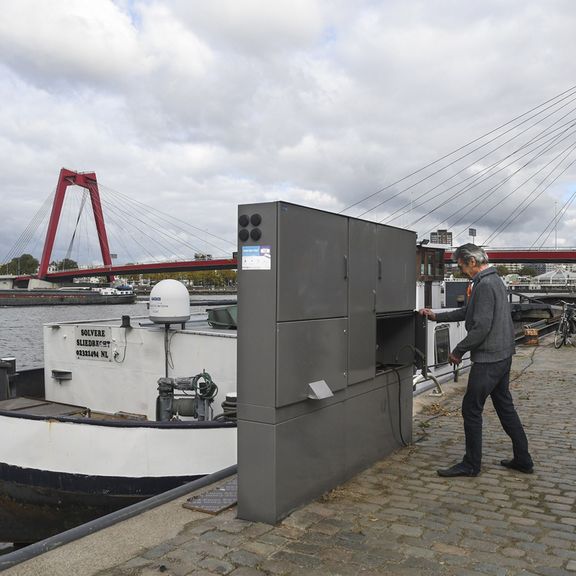
Making an impact
There is a lot going on in the port of Rotterdam to ensure climate-neutral operations by 2050. This overview provides some insight into the steps that have been and are being taken:
- 2018 first LNG bunkering sea-going vessel in Rotterdam
- 2018 first biofuel bunkering in Rotterdam
- 2021 first methanol bunkering in the world in Rotterdam
- 2021 first battery-powered inland shipping vessel put into operation
- 2022 first large shore power installation in the Caland Canal in use
- 2022 TenneT offshore grid Hollandse Kust (south) in operation (wind energy)
- 2023 TenneT offshore grid second connection in operation
- 2024 start of the Porthos CCS project: cooperation between Air Liquide, Air Products, Exxon Mobil and Shell
- 2024 Main hydrogen pipeline in use
- 2024 Shell biofuel plant goes into operation
- 2025 first import of sustainably produced hydrogen
- 2028 largest container ships, passenger and roll-on/roll-off segments will use onshore power
- 2030 first zero-emission vessel in use (Getting to Zero Coalition)
- 2050 Climate neutral
Onshore power
For inland shipping berths, shore power has been the norm in Rotterdam for years. And participation in Zero-Emission Services makes it appealing for inland shipping vessels to switch to electric propulsion. A vessel sails using a battery container (ZESpack) and ensures that no CO2, nitrogen or particulate matter is emitted. In addition, a ZES vessel produces hardly any noise.
Next month, the first large shore power installation in the Caland Canal will be put into operation by Heerema to reduce emissions in the port.
Together with the other north-west European ports, the port of Rotterdam has set itself the target of having all container, passenger and roll-on/roll-off segments use shore power by 2028. In 2021, together with the municipality of Rotterdam, an ambitious strategy was drawn up to make shore power available to maritime shipping. Relevant subsidy programmes are now being set up by the State. This means Rotterdam is ahead of the Fit for 55 targets set by the European Commission.
Emissions in the port account for just 3% of the emissions in the transport chain. 87% is emitted at sea and 10% by hinterland transport. Therefore, efforts are also being made to tackle offshore emissions with efficiency measures and cleaner fuels such as methanol and bio-LNG.
Fuels
The Port Authority stimulates the development of alternative fuels such as methanol, bio-LNG and biofuels. Shell is constructing a biofuel plant at the Shell Energy and Chempark Rotterdam. Neste plans to expand the production capacity of sustainable aviation fuel. The Finnish company UPM has chosen Rotterdam as the intended location for the construction of a new bio-refinery. Making logistics chains sustainable is a multi-track process. The focus is on sustainable fuels, electrification, efficiency and the modal shift.
Fit for 55
The Port of Rotterdam Authority has embraced the extensive European climate package presented on 14 July 2021. The package, Fit for 55, sets the goal of emitting 55% less CO2 by 2030. It is a necessary step towards making our continent climate-neutral by 2050. We looked across the board at legislation that makes all players in the maritime logistics chain responsible for making shipping more sustainable. Fuel EU Maritime ensures that vessels have to use cleaner fuels and shore power. The Alternative Fuel Infrastructure Directive (AFIR) ensures that ports continue to invest in alternative fuels and EU ETS Maritime ensures that vessels continue to invest in improving sustainability. In their analysis, Transport & Environment presents a good idea that proceeds from the EU ETS should be used both to make shipping more sustainable and to invest in cleaner charging infrastructure.
Efficiency
With the help of digitisation new opportunities and initiatives are created to promote efficiency. One example is Port Call Optimisation, which reduces the time spent in port, optimises sailing speeds at sea and minimises waiting times at berths. The Port Authority is working closely with all the players in the logistics chain to facilitate the shipping industry as much as possible in implementing their strategies to become climate neutral. It cooperates with leading ports in Europe and the rest of the world.
Monitoring
In addition, the Port Authority is also working on acquiring better insight into the level of emissions. It has recently announced with BigMile that it is going to develop a digital platform to map transport-related emissions in the port. It can accurately approximate emissions from the transport sector.